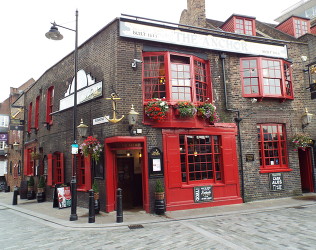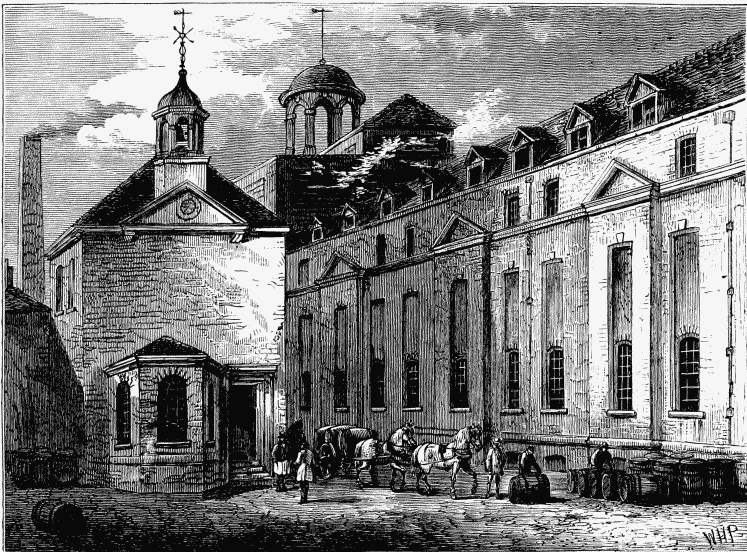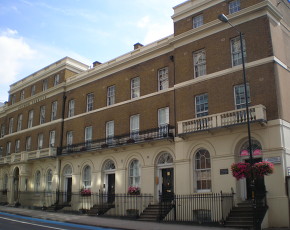





Exploring Southwark and discovering its history
- Home
- About
- Bankside
- Bermondsey
- Bermondsey Industry
- Borough
- Camberwell
- Dulwich
- Newington & Walworth
- Peckham & Nunhead
- Rotherhithe
- Southwark Streets
- Lost Southwark
- Search
- Contact
- Non Gamstop Casinos
- Non Gamstop Casinos
- Non Gamstop Casinos
- Casinos Not On Gamstop
- Non Gamstop Casinos


The Anchor Tavern on Bankside and Anchor Terrace on Southwark Bridge Road are two reminders we have today of the Anchor Brewery, at one time the largest and most famous of London breweries. Its grounds extended from Southwark Bridge to about halfway along the river towards London Bridge, and southwards to what is now Southwark Street. An example of Victorian industrialisation and expansion, in 1748 it produced nearly 56,000 barrels of beer, by 1875 nearly ten times that amount.
Henry Thrale proceeded to further his ambitions for the brewery. He bought the site where the Globe Playhouse had once stood, and, in the other direction, the site where the present Anchor Tavern stands. Henry Thrale’s expansion was not always founded on good business sense and in 1772 the brewery was in financial difficulty. Dr Johnson wrote “this year will undoubtedly be a year of struggle and difficulty.” Much of the credit for the brewery surviving the crisis went to brewery manager John Perkins. He had left his native Durham to make his fortune and had great business ability. Hester too during these difficult years got stuck in, and using a combination of charm and a tenacious sales technique that would be applauded today, obtained orders from former customers who had gone elsewhere. By 1776, the crisis had passed and Dr Johnson prophesised that “as we go on we shall double our business."
Henry Thrale died in 1781, and as there was no surviving male heir, a buyer was sought for the brewery. Dr Johnson was one of the executors and famously wrote that the executors “were not there to sell a parcel of boilers and vats but the potentiality of wealth beyond the dreams of avarice.” His personal hopes of marrying the widowed Mrs Thrale were denied when she married an Italian musician, Gabriel Piozzi, in 1784.
The brewery found a buyer for £135,000 in Robert Barclay, a city merchant, who had the backing of his uncle David Barclay, a prominent member of the banking family. Robert Barclay was shrewd enough to offer a partnership to brewery manager John Perkins who was assisted by the former Mrs Thrale in raising the capital necessary to buy into the company. Barclay Perkins & Co came into being though the brewery was also known as The Anchor Brewery. By 1795 the brewery’s market was truly international:
“[The Brewery] exports annually very large quantities, so far extended are its commercial connections that Thrale’s Intire is well known, as a delicious beverage from the frozen regions of Russia to the burning sands of Bangal and Sumatra. The Empress of all Russia is indeed so partial to porter that she has ordered repeatedly by very large quantities for her own drinking and that of her Court [which] became known as “Russian Imperial Stout”. (Concanen and Morgan, 1795)
Before the introduction of Intire, customers in a tavern bought three brews from three different barrels which were mixed in the customer’s glass at time of purchase. Intire combined the three blends in the barrel before it was delivered.
As the size of the brewery increased, so too did the scale of brewing. In an issue dated 25 August 1847 the London Illustrated News wrote that when the brewery was owned by Henry Thrale it did not brew more than one-twelfth of what was brewed in the present day. When the journalist visited the brewhouse, he became aware of just how large scale the brewing was when “looking upwards, whenever the steamy vapour permits, there may be seen at various heights, stages, platforms, and flights of stairs, all subsidiary to the cyclopean piles of brewing vessels, which reach from the ground to a great height.”
A later visitor to the brewery in 1872 describes how the various buildings are “bridged by light iron bridges that look slight as spider-webs from the pavements … [the departments] follow in well considered sequence, the mashing, the boiling, the cooking, the fermenting, the cleansing, the barrel-fillings, the storing, the despatching … with a sustaining aroma holding all in one atmosphere of which keeps the mind in an unbroken train of thought even when contemplating the stables where the famous horses are kept as daintily as in the Royal Mews.”
There was stabling for about 200 horses who pulled the drays that delivered the barrels of beer. There was a house and laboratory for the vet not far from the stables and also accommodation for sick horses, a blacksmiths and workshops for harness makers. Horses were not the only animals called into service for the great brewery enterprise as there was also a colony of 45 cats that kept the numbers of mice and rats down.
Working in a brewery had both its perks and its side effects. William Rendle, writing in 1888, a former Medical Officer of Health for the St George the Martyr vestry as well as keen local historian, describes the draymen as follows:
“The draymen and horses at Barclay’s were, and I suppose are, fine specimens of their kind; the horses were wonders in size and appearance. The draymen were in my time mostly regular soakers; some more, some less. I attended many of them, notably one gigantic man, for erysipelas*, and as it was needful I should know, so as to guide my treatment, how much he took daily, I asked him. ‘Why, you see, sir,’ said he, ‘that I am one of the oldest of the men who go with the drays, and so my journeys are the short ones. I get a little drink at each place (besides what we get at the brewery) – beer and a drop of gin or what not.’ – ‘How much altogether?’ I asked. ‘About three gallons of beer in the day perhaps, and a little gin now and then besides.’ I could scarcely see how he managed to take it all down, but that was what he said. My practical conclusion was, ‘Well, to get you over the erysipelas you must go on much the same.’ He recovered. I must say the men, so far as the shell was concerned, were often as fine as the horses, but there was a dreamy muddled look about the eyes, and they had a shambling sort of walk. This was many years ago; I practised in Southwark nearly fifty years.”
*a skin condition.

In 1758 Henry Thrale inherited a long established brewery on Bankside from his father and was determined to become the greatest brewer in London. With his wife Hester, he lived in a mansion overlooking the brewery but also had a villa in Streatham then viewed as a country retreat. Mrs Thrale held Thursday salons in Streatham and her wit and vivacity attracted eminent visitors including Boswell, Goldsmith, David Garrick, Sir Joshua Reynolds and Dr Johnson. Both Henry and Hester Thrale became very close to Dr Johnson who was given his own room, both in their mansion at Bankside and in Streatham, where he wrote many of his works.
The Anchor Tavern, Bankside

Barclay Perkins and Co Brewery, 1829

In 1955, Barclay Perkins merged with rival Courage and in 1962 the site on Bankside became a bottling factory. The buildings were demolished in 1981 and gave way to low rise local authority housing. Before redevelopment, an archaeological excavation revealed extensive Roman remains. Anchor Terrace (left) in Southwark Bridge Road that stands over the site of the Globe Playhouse, was built in 1834 to house senior employees of the brewery and was later used as offices. It is now apartments and Grade II listed.
Barclays Perkins & Co - Anchor Brewery
Web discoveries
- UK Casino Not On Gamstop
- UK Casino Not On Gamstop
- Non Gamstop Casino
- Casinos Not On Gamstop
- Non Gamstop Casinos
- Non Gamstop Casinos
- Non Gamstop Casino
- Casino Sites Not On Gamstop
- Slots Not On Gamstop
- Casinos Not On Gamstop
- UK Betting Sites Not On Gamstop
- UK Casino Not On Gamstop
- Best Non Gamstop Casinos
- Betting Sites
- Non Gamstop Casino Sites UK
- Best Non Gamstop Casinos
- Non Gamstop Casino
- Casinos Not On Gamstop
- Non Gamstop Casino Sites UK
© www.exploringsouthwark.co.uk 2014-2019